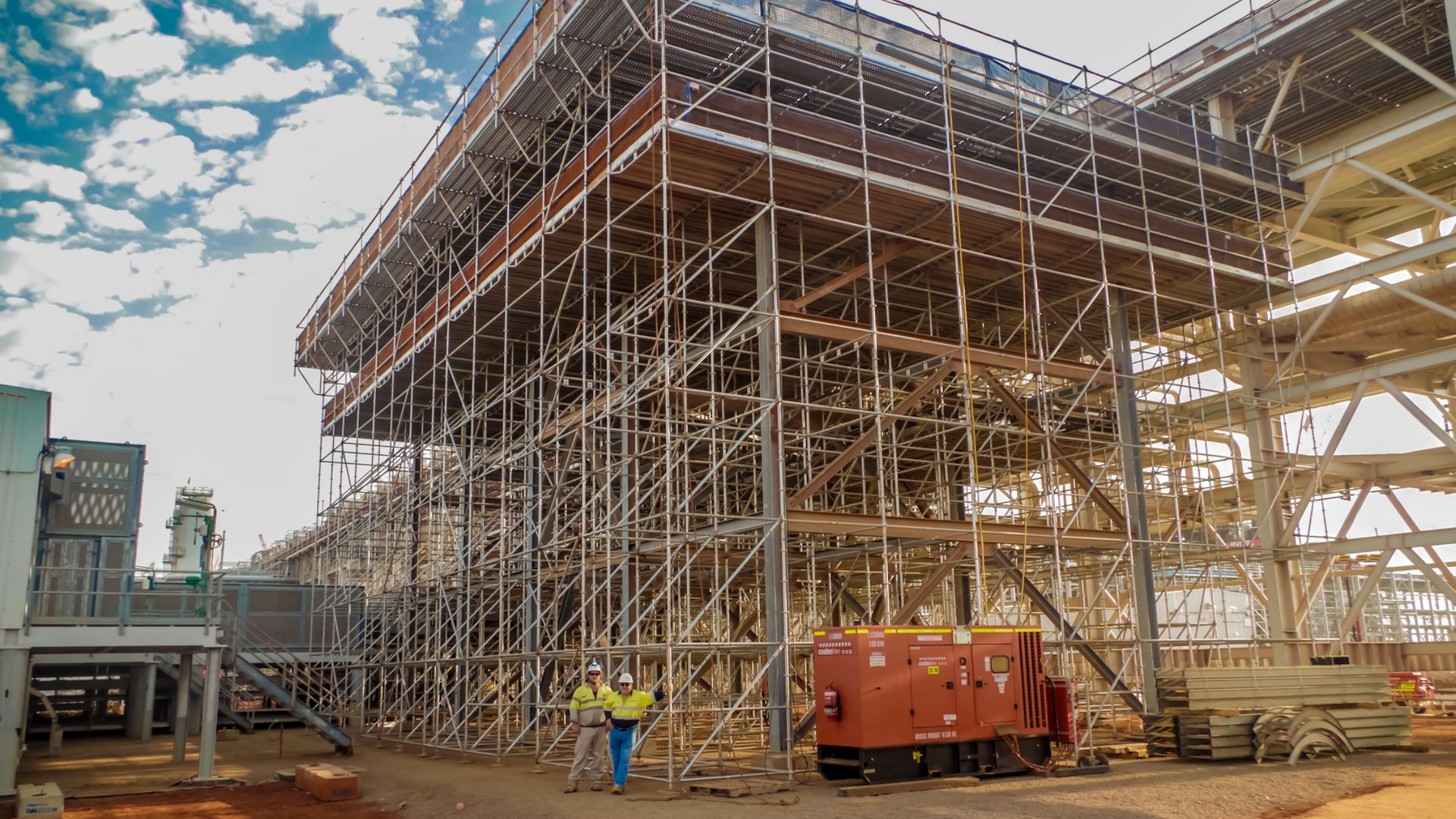SCAFFOLDING SAFETY: HOW TO USE SCAFFOLDING FOR PROTECTION IN EXTREME COLD WEATHER
July 11, 2019

Cold weather can wreak havoc on a job site. Paint will not dry properly and materials and surfaces are unable to reach the required temperatures for proofing and preparation. In addition, limitations of the human body mean your team simply cannot function at the highest level in below freezing temperatures.
Fortunately, scaffolding containment helps protect your job site and workers from extreme cold so you can maintain optimal levels of performance and complete the job on time. Here is a closer look at how to ensure scaffolding safety
in extremely cold weather.
Scaffolding Containment
Scaffolding safety starts with containment, which protects your job site using material that surrounds the scaffolding structure. This material is also known as hoarding. Common types of hoarding include plywood and tarp.
The application process starts by laying the hoarding material you select across the scaffold. Then, a fire blanket or other fire-retardant material is placed on the floor on top of the hoarding material. All materials should be bound tightly to form an adequate seal.
When you use an enclosure it puts extra wind loads into the structure and it could lift up like a huge sail. Therefore, special design is required when sheeting is used on the outside of scaffolding. Butts, ties, and diagonals
are required every other lift vertically.
Elements to Consider
Sufficient access and egress
are critical elements to hoarding design. Make sure there is enough room for uninhibited movement to and from the hoarding, while maintaining sufficient containment.
Quality designs include a “Weather Strip” that provides an overlap to keep it sealed up tight. Typically, a secondary containment room and an adjacent changing room are also incorporated in the design when hazardous containment applications are needed. Components such as the Ten Leg Steel Stair, Aluminum Platform Stair, and Vertical Ladder
can all be used to create a secondary containment room.
1. Roof Support
Another critical element to a hoarding design is an adequately designed and framed roof. A roof helps support the buildup of water, ice, and snow. It also protects against environmental hazards such as waste, dirt, and rust, or any overhead hazard that could fall or be placed on the hoarding roof.
2. Adequate Ventilation
Adequate ventilation within the hoarding should remain a top priority for scaffolding safety. Continuously monitor the hoarding atmosphere based on the standards from the Occupational Safety and Health Administration, or the Occupational Health & Safety Codes of Canada. Typically, this monitoring includes but is not limited to:
- Oxygen (O2)
- Lower Explosive Limit (LEL)
- Carbon Monoxide (CO)
- Thermal/Smoke and Hydrogen Sulphide (H2S)
Cold weather doesn’t have to result in the shutdown of your job site. Taking a few extra steps and precautions can keep your site safe, your team working efficiently, and your project on track.
If you’re losing project time to cold weather, the scaffolding product design
specialists at AT-PAC can help. Contact us and we can help you design a perfect custom solution to meet all of your project’s needs.
You might also like
AT-PAC Blog

For nearly a decade, AT-PAC's Baton Rouge branch has been a cornerstone of our southern U.S. operations, proudly supporting projects across Louisiana, Missouri, Arkansas and Mississippi. Known for their dependable service and deep industry knowledge, the Baton Rouge team continues to strengthen AT-PAC's presence in the region - helping customers keep projects on track and on time. Under the leadership of Branch Manager Jeremy Smith, this experienced team has built lasting relationships through reliability, responsiveness, and a hands-on approach. Their recent move to a larger, upgraded facility marks an exciting new chapter - expanding their capacity to serve more customers, more quickly than ever before. Hear from Jeremy below about the team's new space, their commitment to customers, and how Baton Rouge continues to raise the standard across the South. Ready to reach out to the team? Contact them here .

AT-PAC established its presence in Australia with one clear mission: to deliver world-class scaffolding solutions built on innovation, safety, and reliability. This month, we are proud to celebrate this milestone alongside the customers, partners, and employees who have made the journey possible. A Journey of Growth and Innovation From our very first projects to supporting some of Australia’s most iconic and complex industrial facilities, AT-PAC Australia has continuously evolved to meet the needs of our customers. Over the past decade and a half, we have grown from a local provider into a trusted partner, recognized for delivering integrated scaffold solutions across multiple sectors, and 5 branch locations. Key Milestones Over 15 Years 2010 – AT-PAC launches in Australia, introducing the globally trusted Ringlock System to the local market. 2013 – Established Global Site Solutions and Hi-Vis® Scaffold Management Software and deployed to Wheatstone LNG. 2015 – Establishment of our dedicated Australian based Design & Engineering team, enabling tailored solutions for high-risk and large-scale access needs. 2020 – Significant role in supporting LNG and energy sector projects, delivering some of the country’s most challenging scaffold builds. 2023 – Integration into the Umdasch Group (Doka), strengthening our global reach and resources while reinforcing our local focus on Scaffolding. 2024 – Major partnerships secured in infrastructure and industrial sectors, with enhanced scaffold management technology (Hi-Vis®) rolled out to support customers. 2025 - AT-PAC becomes part of the umdasch Industrial Solutions, a division of the Umdasch Group. Looking Ahead While 15 years is a proud achievement, we view it as just the beginning. Our commitment remains to provide safe, efficient, and innovative solutions that help our customers succeed. The future will see AT-PAC Australia continue to expand our service offerings, strengthen local partnerships, and invest in digital and engineering innovation and open new branch locations. A Thank You to Our Partners This milestone belongs not just to AT-PAC Australia, but to the customers and partners who have trusted us along the way. Your challenges have shaped our solutions, and your projects have inspired us to continuously raise the Ledger. Here’s to the next 15 years of innovation, collaboration, and building safer industry together. AT-PAC is celebrating 30 years of business, read more here .

